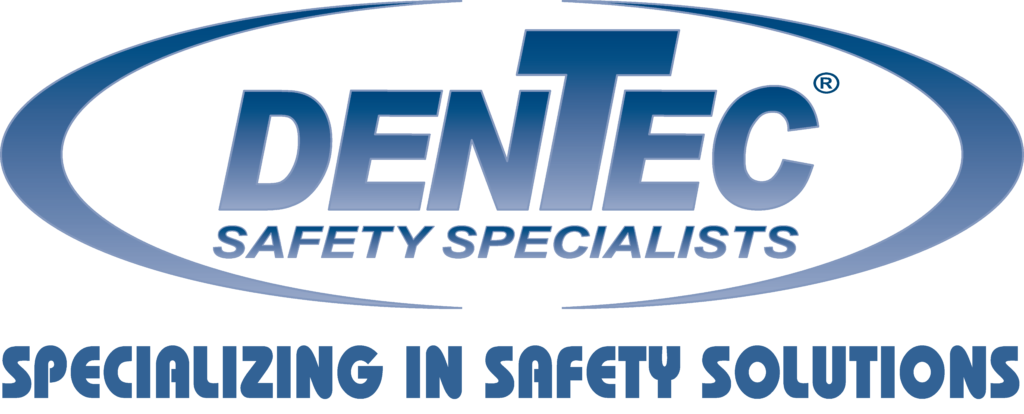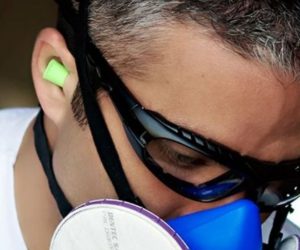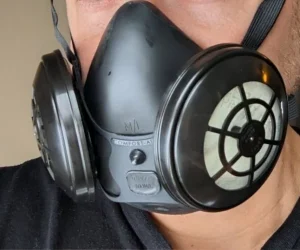First aid kits are a critical piece of personal protective equipment (PPE) for every business no matter how large or small.
First aid is required by all workplaces according to the Provincial Occupational Health & Safety Act. Unfortunately, many people do not understand the first aid kit requirements for their workplace and assume that first aid programs are typically reserved for certain business types i.e. manufacturing, food processing, etc.
Here are some examples of businesses that require specific attention to their first aid programs:
- Restaurants – however, often the first aid kit components do not include burn treatment products that should be added to the kit or purchased separately.
- Offices – in buildings with multiple floors. Every business on each floor must have its own first aid kit.
- Retail Store – every store must have a first aid kit. Each store located in a mall must have a first aid kit.
- Workplace Vehicles – every single type of vehicle used for work must have a first aid kit included.
- Auto Repair Centers -whether you are cutting metal, grinding, there are a number of hazards that need to be addressed.
- Car Dealerships – First aid kits for office space as well as the repair center both need to be addressed.
- Dry Cleaning-Burns and scalds are a common injury in dry cleaning facilities as well as the hazard risk of working with caustic and corrosive chemicals.
First aid kits are law! Whether at work or play, accidents can happen anywhere, and you never want to be without these essential supplies to keep you, your colleagues and your loved ones safe.
CSA First Aid Kit Regulations
For many years in Canada, the provincial regulations were segregated, and first aid requirements were determined at the provincial level causing confusion and uncertainty as to which components were required in emergency situations. Compounding this uncertainty, first aid responders may not be familiar with another province’s mandated componentry that shows up in their provincial first aid kits. In a nutshell, that’s why the Canadian Standards Association (CSA) developed the Z1210 and Z1220 standards; to provide a harmonious first aid training program across the country and complement that training with consistent first aid components that first aiders are familiar with when delivering first aid.
How the CSA First Aid Standards Have Changed
Before the CSA Z1220 Standard came into effect, provincial regulations differed greatly. Canada has a large number of workers/employees that work interprovincially. This means that they need to be familiar with multiple provincial first aid standards that require first aid training and first aid kits. The introduction of CSA Z1220, First aid standard for the workplace, was intended to simplify and standardize first aid training and delivery across the country.
What is the CSA Z1210 Standard?
CSA Z1210-17 (17 recognizes the year in which the standard was written) as identified by the Canadian Red Cross is a “standardization of Workplace First Aid certifications in Canada. This standardization includes both the Training Curriculum and Certification, as well as First Aid kit requirements for workplaces”.
What is the CSA Z1220 Standard?
CSA Z1220 provides general requirements for workplace first aid kits, specifies a classification system for the kits, and sets minimum requirements for their contents based on their classification. It also provides requirements for the selection of first aid kits based on various workplace environments, for their containers, the marking of the containers, and for ongoing kit maintenance. Two informative annexes provide guidance for organizations on carrying out a workplace first aid risk assessment to determine appropriate levels of first aid equipment and supplies and to assess the need to augment the requirements set out in the Standard.
Which Provinces Have Switched to the New CSA First Aid Kit Standards?
As of December 1st, 2022, CSA Z1220 first aid kits are mandatory for the following provinces and territories:
- Manitoba
- Saskatchewan
- Quebec
- New Brunswick
- Newfoundland
- Prince Edward Island
- Northwest Territories
- Nunavut
Nova Scotia is the next province that has committed to adopting the CSA Z1220 Standard with a compliance deadline of June 13th, 2023. In Ontario, the Workplace Safety, and Insurance Board (WSIB) now accepts CSA Z1220 first aid kits. Workplaces have the option of supplying the Regulation 1101 first aid kit requirements or CSA Z1220 first Aid kits for the workplace. Alberta now accepts CSA Z1220 first aid kits as well as Occupational Health
*As of writing this, British Columbia has yet to adopt the CSA Z1210/Z1220 Standards.*
CSA Workplace First Aid Kit Types

Just like before, with the new CSA First Aid Standards, employers need to conduct hazard assessments to determine which type and level of First Aid Kit is required for their environment and application.
The CSA Z1220 Standard outlines three separate classifications of first aid kits according to the workplace and hazard assessment. Workplace first aid kits are classified as Type 1, Type 2 and Type 3. CSA has provided the following recommendation to help businesses determine which first aid kit is suitable for their workplace:
CSA Type 1: Personal First Aid Kit

An organization shall provide a Type 1: Personal first aid kit to all workers who work in isolation or those who do not otherwise have access to a workplace first aid kit.
This makes a Type 1 First Aid Kit ideal for fleet vehicles, independent contractors or those who work by themselves i.e snow removal, delivery drivers, etc.
CSA Type 2: Basic First Aid Kit

A CSA Type 2: Basic workplace first aid kit is suitable for most workplaces with a low-risk work environment. Basic first aid kits contain the minimum content requirements for each of the three sizes : small, medium, and large and are based on the number of workers at the workplace per shift. Low-risk applications are the most common placements for CSA Type 2 First Aid kits, such as office, educational settings or retail where the likelihood of severe injury is relatively low.
CSA Type 3: Intermediate First Aid Kit

A CSA Type 3: Intermediate first aid kit is suitable for workplaces with a higher-risk work environment. A Type 3 first aid kit contains all the items in a Type 2 first aid kit in accordance with CSA requirements, plus additional items to meet the needs of workplaces with an increased risk of first aid events. Type 3 Kits are typically found in mining, oil & gas, forestry, machine shops, metal fabrication, labs or any industrial construction type application where the risk of severe injury is elevated.

One of the major benefits when evaluating this new CSA regulation is that the entire program is meant to be scalable. For instance, in a construction setting you may have a job site that starts off with relatively few workers, but ramps up to dozens, or perhaps hundreds. Then, as the project is nearing completion, head count tends to diminish. Under the old provincial system, employers would have to purchase multiple types of kits as head counts rose. But under the new CSA standards, employers can simply implement more of the same type of first aid kit as head counts vary.

For a complete component replenishment listing, be sure to see Dentec’s CSA Z1220 Kits Replenishment Content Listing.
On top of meeting the bare minimum requirements, employers should be mindful of including hazard specific first aid supplies which are NOT included in the CSA regulations. For example, if there is a burn hazard, incorporating products like Burnshield® (sterile line of burn gels and burn dressings for optimal emergency burn-care) into your first aid program can address this specific hazard type. Another example is Bio-Hazard Clean-Up Kits to address common bodily fluid spills such as blood or vomit. Additionally, if there is risk of splash or particulate injuring an employee, the need for emergency eyewash stations may also be required.

Dentec Safety offers a wide assortment of CSA First Aid Kits, Provincial First Aid Kits, federally regulated First Aid Kits, Sport & Automobile first aid kits as well as the ability to custom design and custom logo kits for your unique business needs. Whether you require a first aid kit for your business or recreationally, Dentec has a first aid kit solution for hiking, biking, automobile, or home and personal use first aid kits.
If you have questions about the new CSA standards or anything First Aid related contact us to chat with one of our Safety Specialists today.
Dentec Safety is a leading manufacturer and distributor of safety products in the North America since 2004. Dentec Safety is dedicated to providing the highest quality safety products and solutions delivering enhanced value and comfort. Our expertise from decades of experience in Industrial Safety and our innovative design technologies have solidified us as thought leaders in the field. Protection and comfort are at the core of everything we do at Dentec. As a leading manufacturer of Safety Solutions, it is our mission to help organizations do the right thing, keep their employees safe and exceed Industry Health & Safety Standard.








